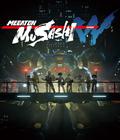Variable-Rate Shading (VRS) is a new feature that allows developers to improve performance by selectively reducing the level of detail in parts of the frame where there will be little noticeable effect on image quality.
With VRS, developers can vary the shading rate within a single frame. By using VRS to lower the shading rate for parts of the frame that are in deep shadow, far from the camera, or peripheral to the player's focus, for example, a game can run at a higher frame rate with little perceptible loss in visual quality. VRS is broadly accessible to developers since it’s built into DirectX 12, Vulkan, OpenGL, and DirectX 11 (NvAPI).
There are two tiers of VRS support. Tier 1 VRS allows different shading rates for each draw call. Tier 2 hardware can additionally support VRS within each draw call. Only Turing GPUs, including RTX and GTX variants, support both tiers.
Building upon VRS, Turing GPUs also support NVIDIA Adaptive Shading (NAS), which adjusts the rate at which portions of the screen are shaded, meaning the GPU has less work to do thereby boosting performance. NAS is already supported in MachineGames’ Wolfenstein: Youngblood, where in some scenes, NAS provides up to 15% performance boost, and will be included in Call of Duty: Modern Warfare, which will be shipping later this year.








